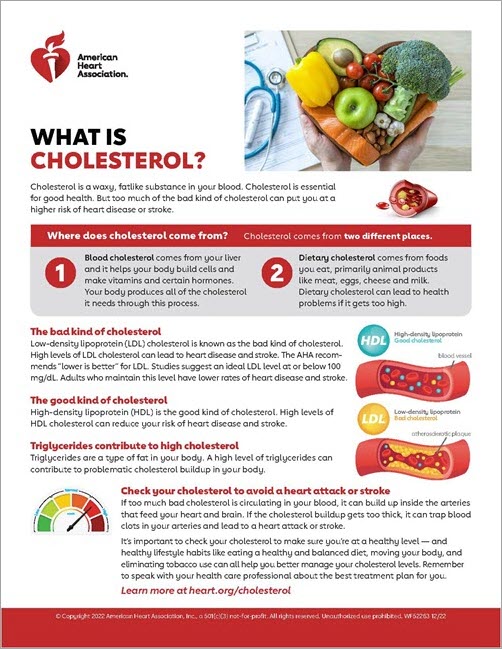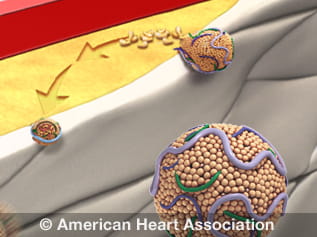HDL (Good), LDL (Bad) Cholesterol and Triglycerides
Cholesterol: The good and the bad
Two types of lipoproteins carry cholesterol to and from cells. One is low-density lipoprotein, or LDL. The other is high-density lipoprotein, or HDL. A test measures the amount of each type of cholesterol in your blood.
LDL cholesterol
LDL cholesterol is considered the “bad” cholesterol because it contributes to fatty buildups in arteries (atherosclerosis). This narrows the arteries and increases the risk for heart attack, stroke and peripheral artery disease, or PAD.
What Does My LDL Number Mean? (PDF) | Spanish (PDF)
Why Should I Know My LDL Cholesterol? (PDF) | Spanish (PDF)
HDL cholesterol
HDL cholesterol can be thought of as the “good” cholesterol because a healthy level may help protect against heart attack and stroke.
HDL carries LDL (bad) cholesterol away from the arteries and back to the liver, where the LDL is broken down and passed from the body. But HDL cholesterol doesn't eliminate LDL cholesterol. Only a fraction of blood cholesterol is carried by HDL.
Triglycerides
Triglycerides are the most common type of fat in the body. They store excess energy from your diet.
A high triglyceride level combined with high LDL cholesterol or low HDL cholesterol is linked with fatty buildups within the artery walls, which increases the risk of heart attack and stroke.
View What is Cholesterol? (PDF) |Spanish (PDF)







